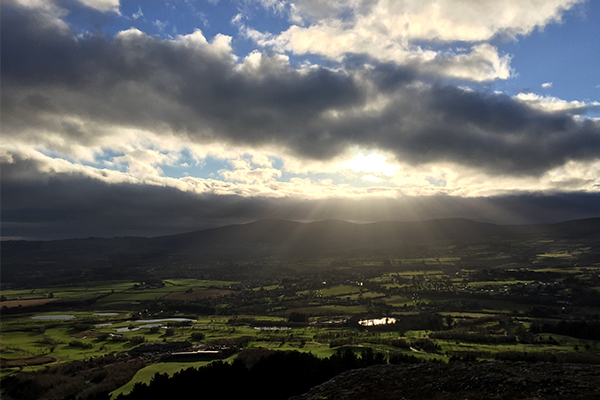The English painter Joseph Mallord William Turner’s ( known as J.M.W.Turner) piece titled Snow Storm: Steam-Boat off a Harbor’s Mouth was finished in 1842. Weeping Willow is a painting by French artist Claude Monet from 1918. These two paintings from different artists in different centuries are not much related in terms of the descriptions, but when people appreciate them at the same time, they may have a sense of connection, because the viewers cannot immediately distinguish the specific objects from the two paintings, they all seem to be very abstract.
In fact, the two painters represent two different styles. When we review the background of the two painters, we can identify that Joseph Mallord William Turner is defined as an English Romantic landscape painter, while Claude Monet is regarded as one of the leading artists of during the impressionism period. However, the two painters who seem irrelevant have many similarities in their aesthetic theories. Also, their works which look similar are different in their techniques. Therefore, this paper will explore in two parts:the same and the difference. The paper will also identify how the painters of two different periods created their works in a similar feeling.
Snow Storm: Steam-Boat off a Harbor’s Mouth by Joseph Mallord William Turner depicts a snow storm scene on the sea. In the middle of the painting, there is a paddle steamer that is fighting against the storm. But when you look closely at the picture, it is even harder to identify the particular objects in the painting: the outline of the paddle steamer is very blurred. The details of the paddle steamer seem to be “ignored” by Turner, you cannot even identify the bow or the stern. However, when you stand a little further, the whole body of the paddle steamer appeared and the outline starts to be visible. Weeping Willow by Monet also brings the similar experience to the audience. When you staring at the picture, it is impossible to realize what Monet was trying to paint. However, when you appreciate the picture from a short distance, the outline of the weeping willow will be clear.
In fact, though J.M.W.Turner is defined as an English Romantic painter, many of his works in late years has shown the Impressionist style. Turner is not a painter who is conservative and reserved, he has shown his modern concepts in painting techniques. He has ever stated his experience and thoughts when he created this artwork at the age of 67: “ I did not paint it to be understood, but I wished to show what such a scene was like; I got the sailors to lash me to the mast to observe it; I was lashed for four hours, and I did not expect to escape, but I felt bound to record it if I did.” (Wullschlager, 2012) His words sound like a personal painting experience of an impressionism painter.
He was no longer trying to describe the accurate details of an object, he was trying to expressing the different feeling of a scene and then record it in his painting. Just like the painter in Impressionism period, Turner does not record it directly, he recorded it according to his impression and observation. Monet has ever learnt about J.M.W.Turner’s artwork. During Monet’s whole life, he has visited London for several times and has ever expressed how much he liked Turner’s work. There are several exhibitions and books that put J.M.W. Turner, James McNeil Whistler, and Claude Monet together. This also proves some similarities and connections between Turner and Claude.
Both Turner and Monet are nature lovers. They all painted the natural scene with a dreamlike feeling. Turner and Monet are famous for handling the light, color and shadow in their painting techniques. Weeping Willow is an oil painting by Monet and has shown his excellent techniques in mastering color, shadow and light. Monet painted the trees in diverse colors. The shape of the falling branches looks like the girl’s smooth hair. The lines of these branches are soft and irregular.
The contrast of light in the picture is also very notable. The light gradually brightens from the left to the right of the painting, and the color also becomes warmer on the right side. Turner also caught the importance of the light in the nature themed painting. His artwork gradually brightens from the edge to the center. The lines which present the storm and wave also seems a little irregular. Instead of using black to emphasized the shadow or the darkness, they used diverse colors to create the similar effect. Both Turner and Monet prefer the warm colors in painting, therefore, there are also many similarities in the color tones of their works.
Turner is a master of watercolor, he used his watercolor techniques in his oil painting. Monet was also greatly inspired by Turner’s painting techniques. Therefore, there are also some features of watercolor in Monet’s oil paintings. For example, instead of using dark and light tones to present the contrasts, they set off cold and warm colors to achieve this. They also use the watercolor techniques to make the painting luminous and atmospheric. But Turner’s painting still has the features from Romantic period. His theme still focuses on the magnificence of nature and his techniques are still following the principles. Monet’s painting during this period looks more abstract and colorful, he has broke the traditional the traditional academic aesthetics. Overall, Turner and Monet are representatives of innovation. The two paintings has shown their unique techniques in painting style.

